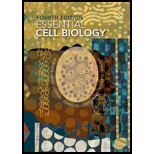
A.
To explain: Designing a collection of DNA probes specific for the 3 peptides generated from the protein cleavage using genetic code. Selecting a suitable oligonucleotide probe from the pool and using it to detect the gene in the cDNA library by hybridization.
Concept introduction: Proteasomes are enzymes that cleave to the proteins. Genetic code is a set of 64 triplet codons that code for the 20 essential and non-essential amino acids in biology. The genetic code is universal, degenerate, and redundant. Probes are DNA sequences of short length, which are used to hybridize with the target cDNA in order to identify it. The probes are usually radioactively tagged to identify the target cDNA of interest. Polymerase chain reaction (PCR) is an instrument used to amplify small fragments of DNA for various analyses. PCR is cost-effective, dependable, and a simple way to repeatedly amplify that is replicate a small fragment DNA of interest. PCR is the most widely used molecular technique used all over the world.
B.
To explain: The designing of an oligonucleotide primer with the data that Gln(Q) of protein sequence 3 is the C terminal amino acid that could be used to amplify a portion of the gene from a cDNA library using PCR.
Concept introduction: Proteasomes are enzymes that cleave to the proteins. Genetic code is a set of 64 triplet codons that code for the 20 essential and non-essential amino acids in biology. The genetic code is universal, degenerate, and redundant. Probes are DNA sequences of short length, which are used to hybridize with the target cDNA in order to identify it. The probes are usually radioactively tagged to identify the target cDNA of interest. Polymerase chain reaction (PCR) is an instrument used to amplify small fragments of DNA for various analyses. PCR is cost-effective, dependable, and a simple way to repeatedly amplify that is replicate a small fragment DNA of interest. PCR is the most widely used molecular technique used all over the world.
C.
To explain: The conclusions based on the sequence obtained from PCR amplification is 300 nucleotides long with CTATCACGCCTTAGG sequence approximately in the middle.
Concept introduction: Proteasomes are enzymes that cleave to the proteins. Genetic code is a set of 64 triplet codons that code for the 20 essential and non-essential amino acids in biology. The genetic code is universal, degenerate, and redundant. Probes are DNA sequences of short length, which are used to hybridize with the target cDNA in order to identify it. The probes are usually radioactively tagged to identify the target cDNA of interest. Polymerase chain reaction (PCR) is an instrument used to amplify small fragments of DNA for various analyses. PCR is cost-effective, dependable, and a simple way to repeatedly amplify that is replicate a small fragment DNA of interest. PCR is the most widely used molecular technique used all over the world.
Want to see the full answer?
Check out a sample textbook solution
 Human Anatomy & Physiology (11th Edition)BiologyISBN:9780134580999Author:Elaine N. Marieb, Katja N. HoehnPublisher:PEARSON
Human Anatomy & Physiology (11th Edition)BiologyISBN:9780134580999Author:Elaine N. Marieb, Katja N. HoehnPublisher:PEARSON Biology 2eBiologyISBN:9781947172517Author:Matthew Douglas, Jung Choi, Mary Ann ClarkPublisher:OpenStax
Biology 2eBiologyISBN:9781947172517Author:Matthew Douglas, Jung Choi, Mary Ann ClarkPublisher:OpenStax Anatomy & PhysiologyBiologyISBN:9781259398629Author:McKinley, Michael P., O'loughlin, Valerie Dean, Bidle, Theresa StouterPublisher:Mcgraw Hill Education,
Anatomy & PhysiologyBiologyISBN:9781259398629Author:McKinley, Michael P., O'loughlin, Valerie Dean, Bidle, Theresa StouterPublisher:Mcgraw Hill Education, Molecular Biology of the Cell (Sixth Edition)BiologyISBN:9780815344322Author:Bruce Alberts, Alexander D. Johnson, Julian Lewis, David Morgan, Martin Raff, Keith Roberts, Peter WalterPublisher:W. W. Norton & Company
Molecular Biology of the Cell (Sixth Edition)BiologyISBN:9780815344322Author:Bruce Alberts, Alexander D. Johnson, Julian Lewis, David Morgan, Martin Raff, Keith Roberts, Peter WalterPublisher:W. W. Norton & Company Laboratory Manual For Human Anatomy & PhysiologyBiologyISBN:9781260159363Author:Martin, Terry R., Prentice-craver, CynthiaPublisher:McGraw-Hill Publishing Co.
Laboratory Manual For Human Anatomy & PhysiologyBiologyISBN:9781260159363Author:Martin, Terry R., Prentice-craver, CynthiaPublisher:McGraw-Hill Publishing Co. Inquiry Into Life (16th Edition)BiologyISBN:9781260231700Author:Sylvia S. Mader, Michael WindelspechtPublisher:McGraw Hill Education
Inquiry Into Life (16th Edition)BiologyISBN:9781260231700Author:Sylvia S. Mader, Michael WindelspechtPublisher:McGraw Hill Education





